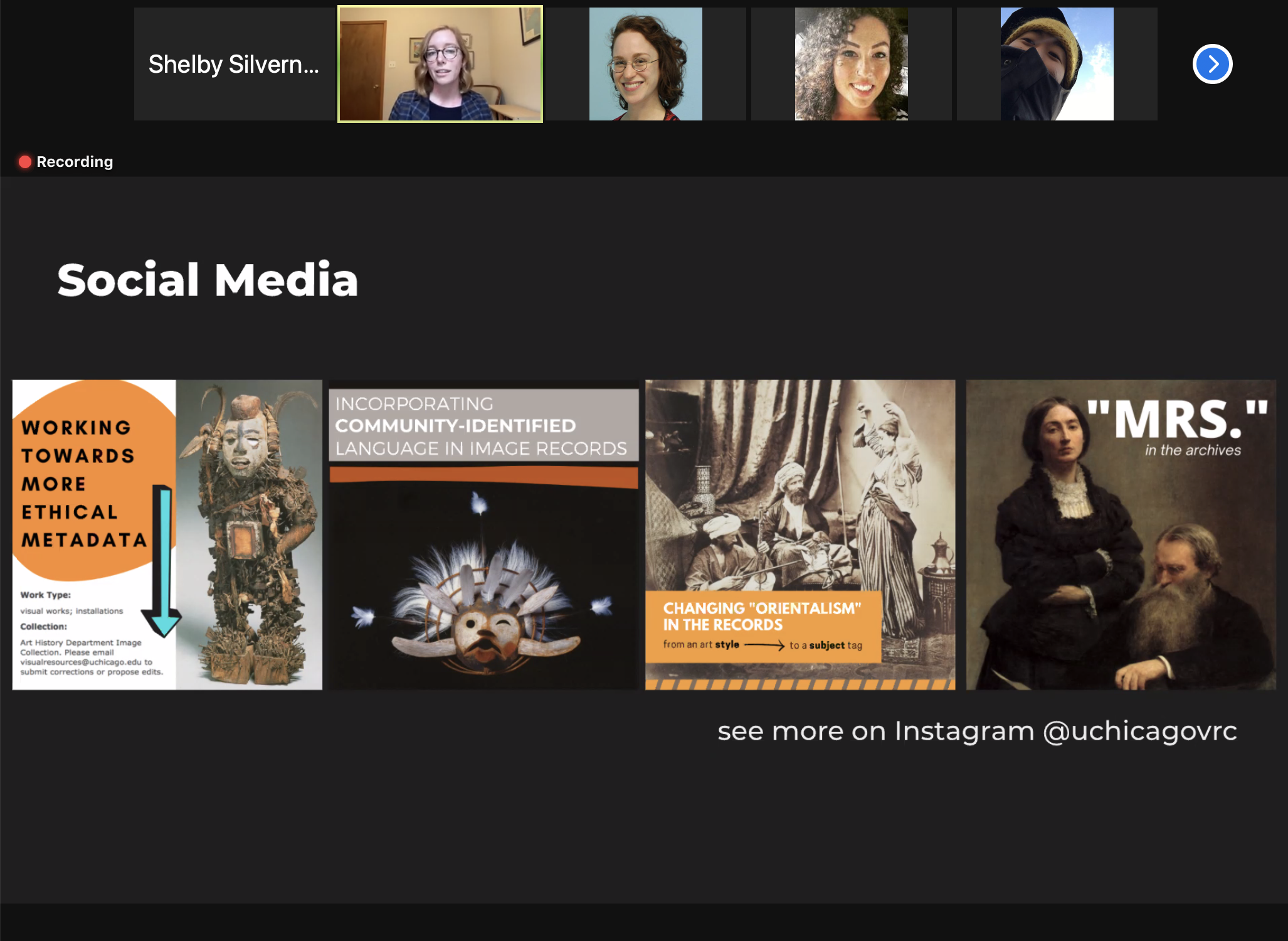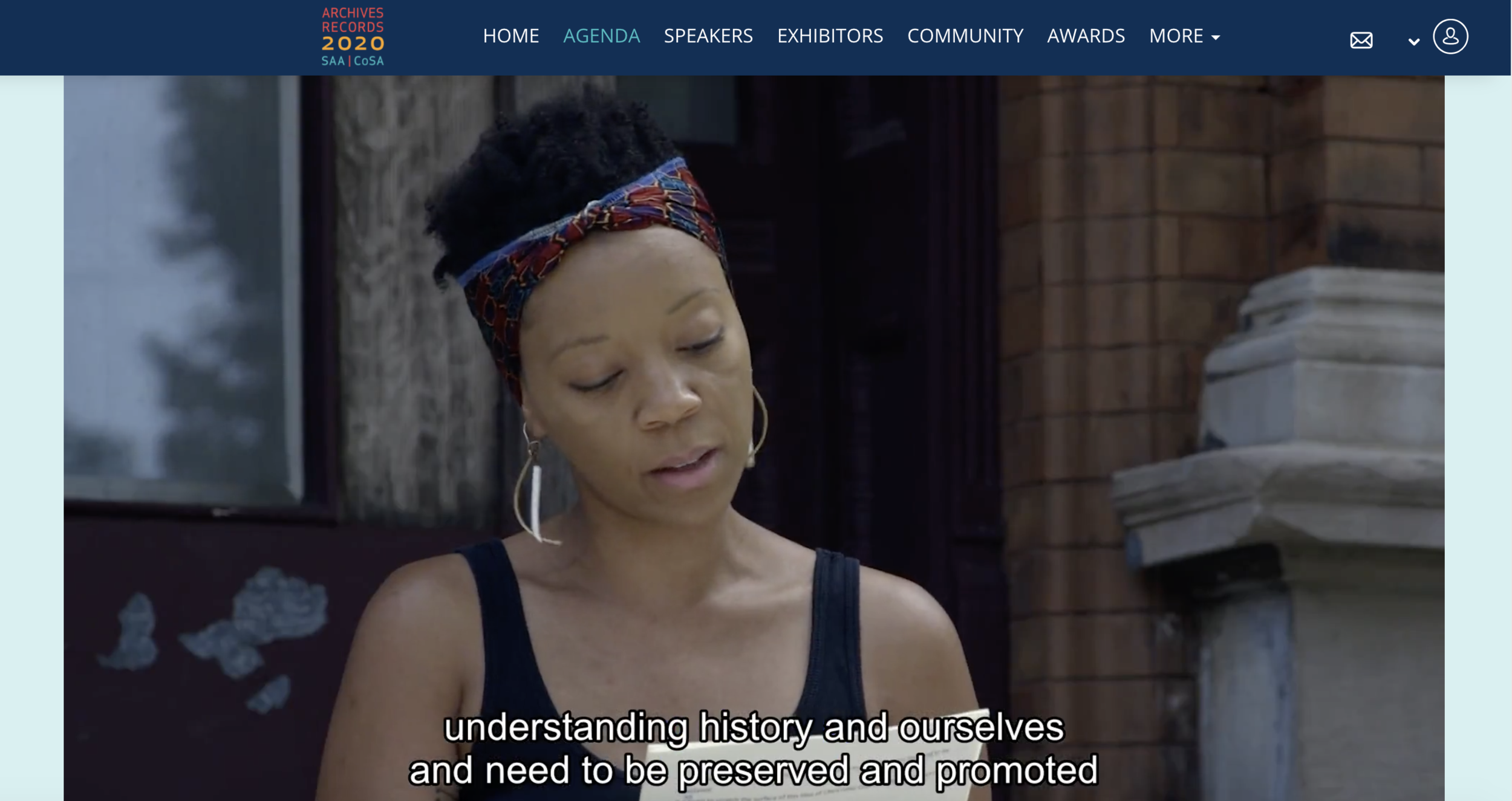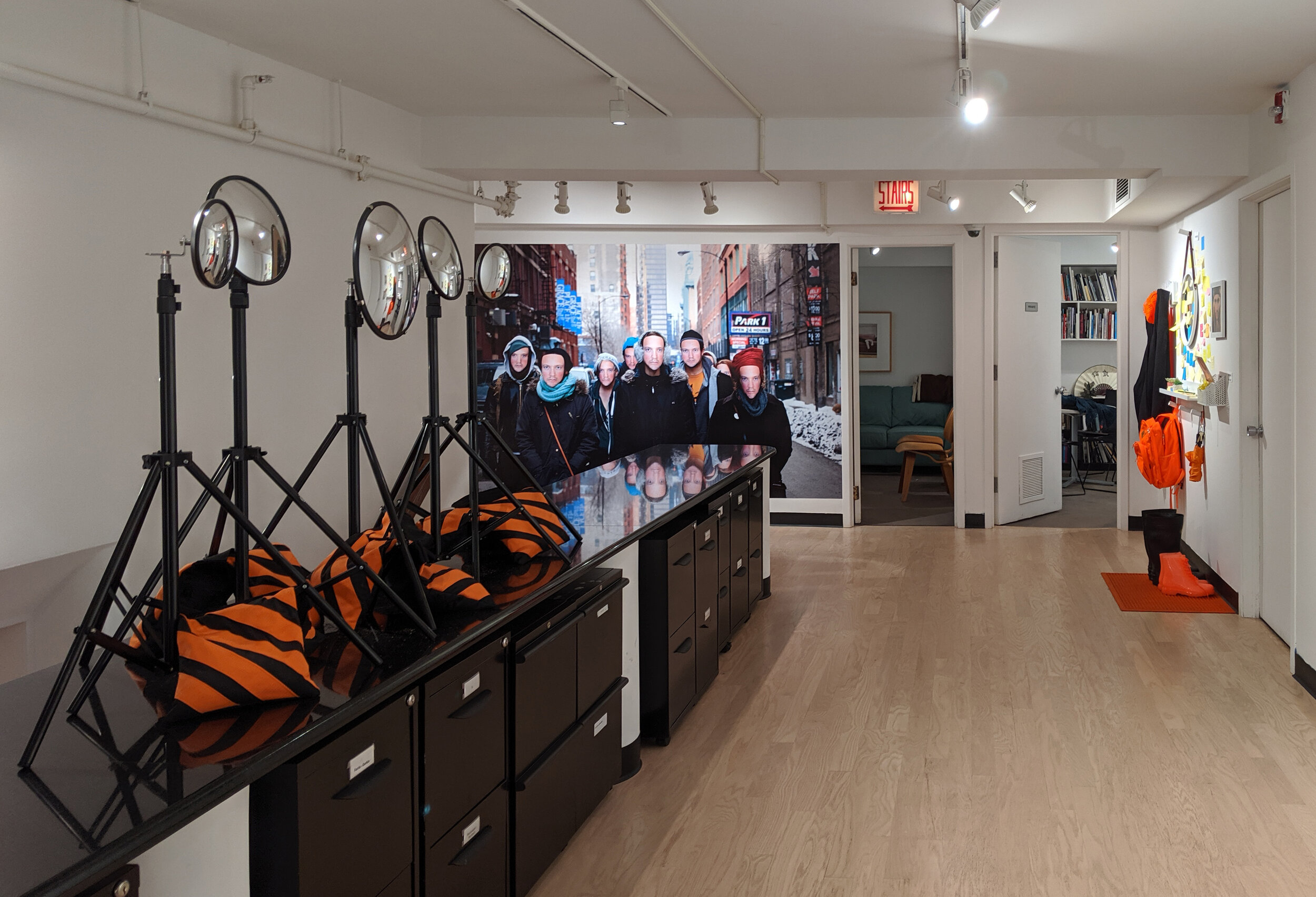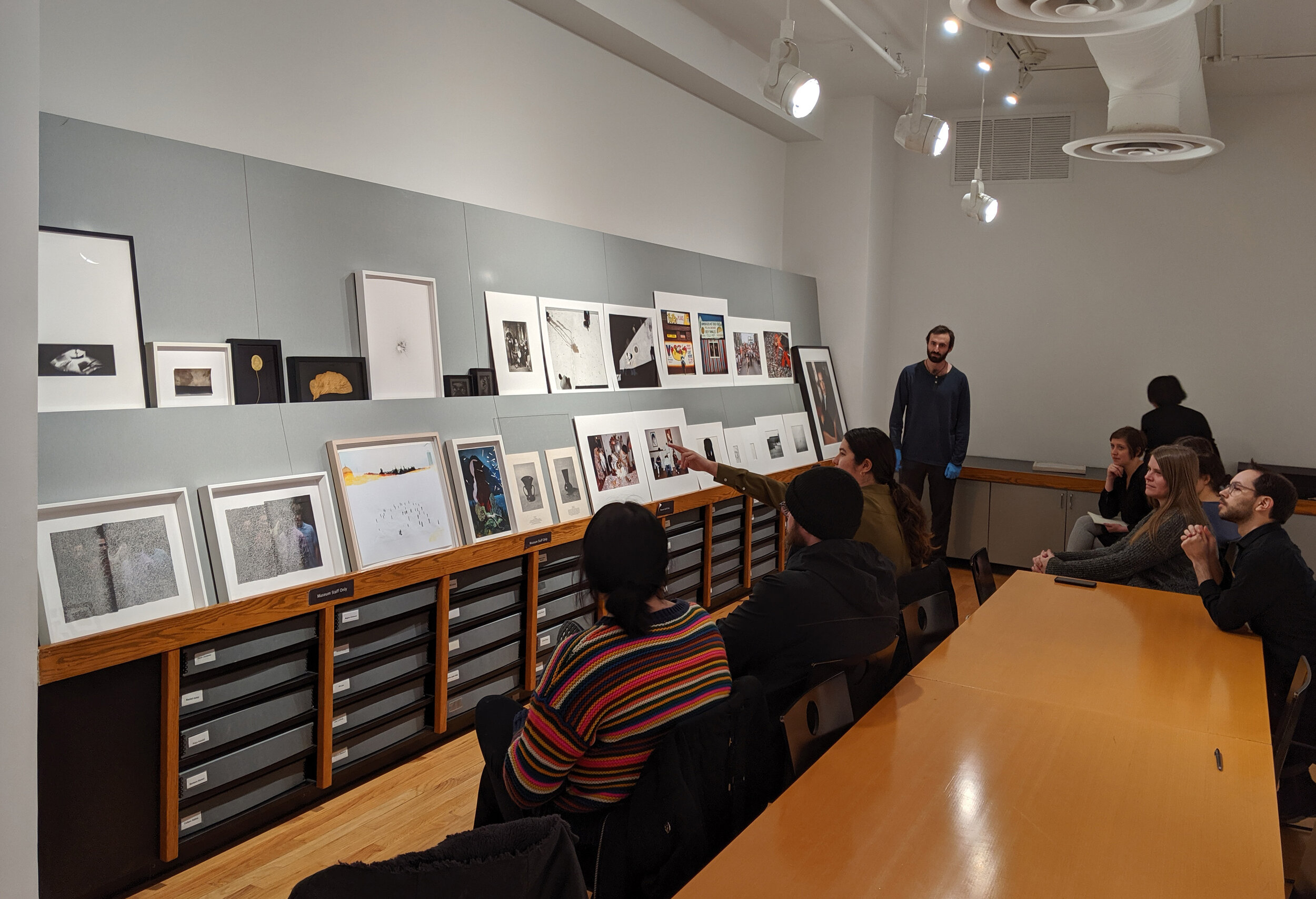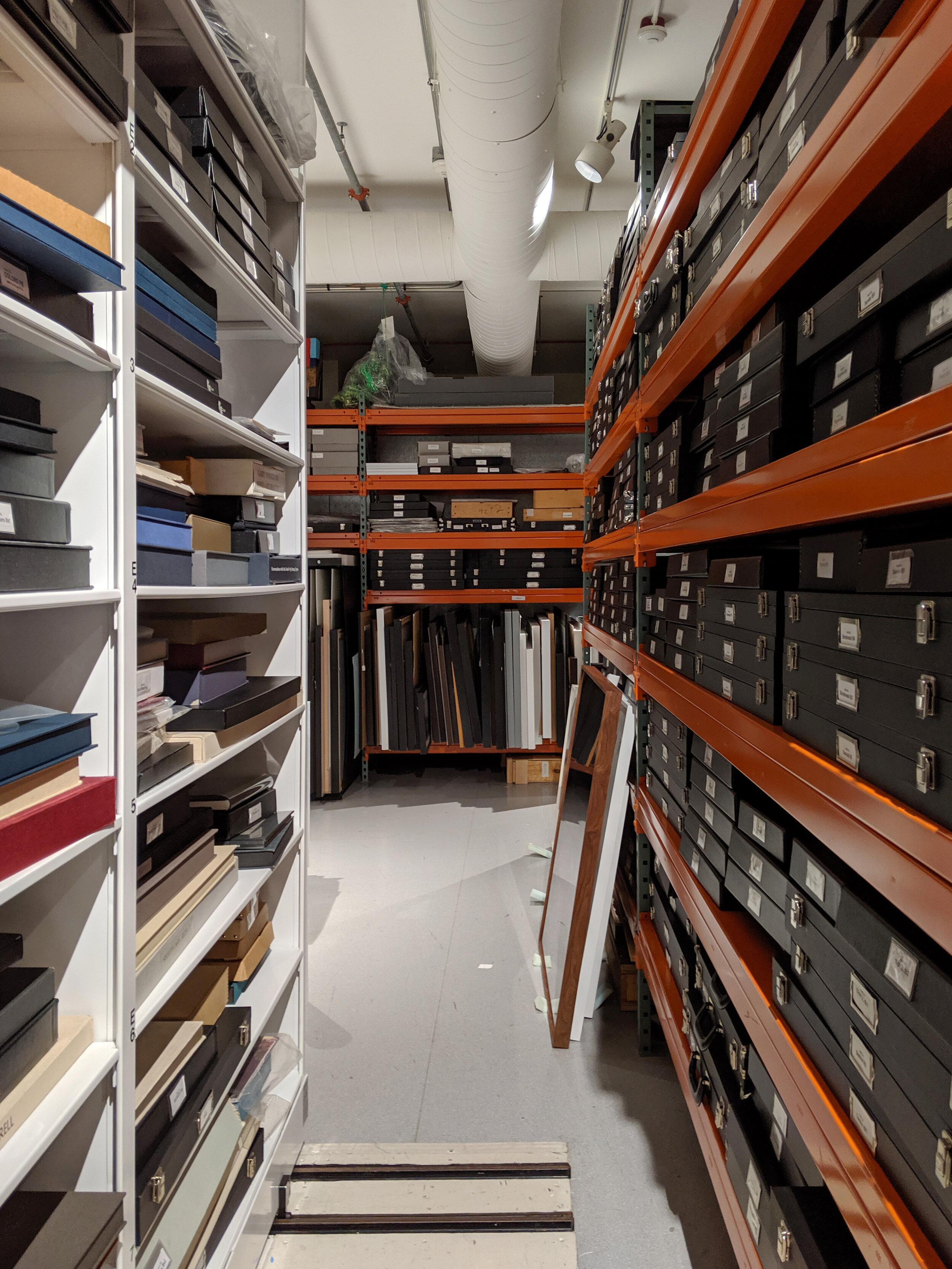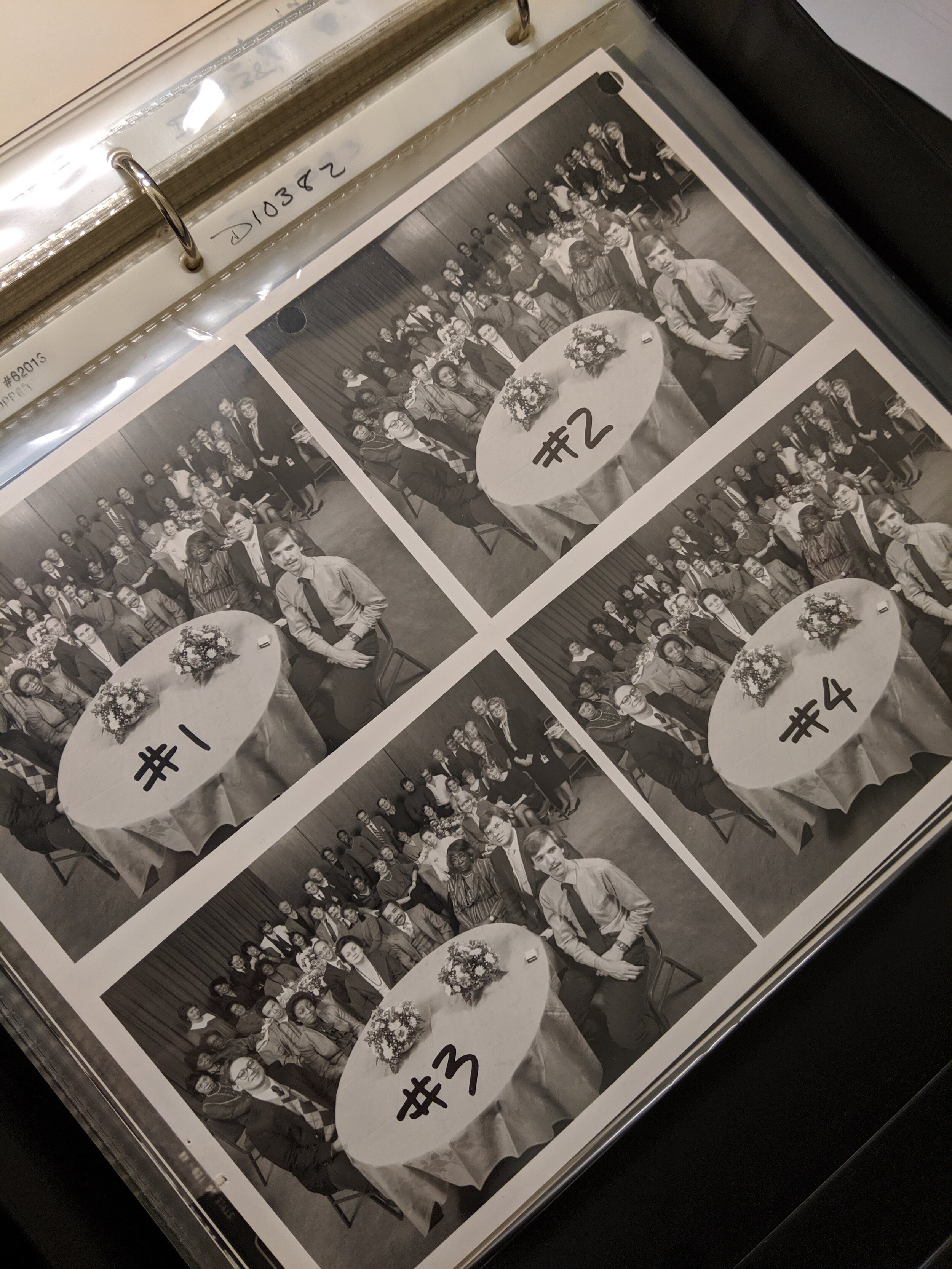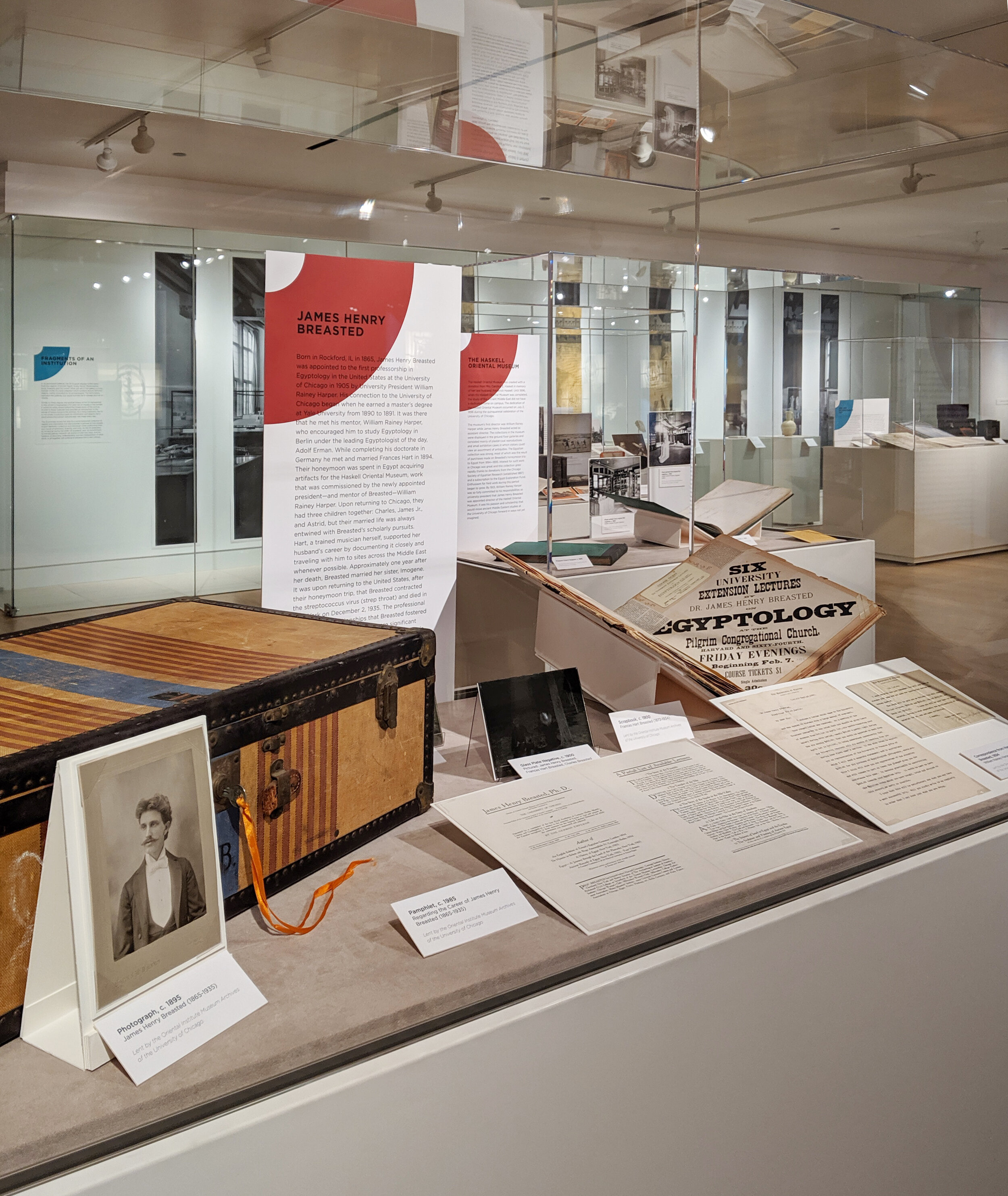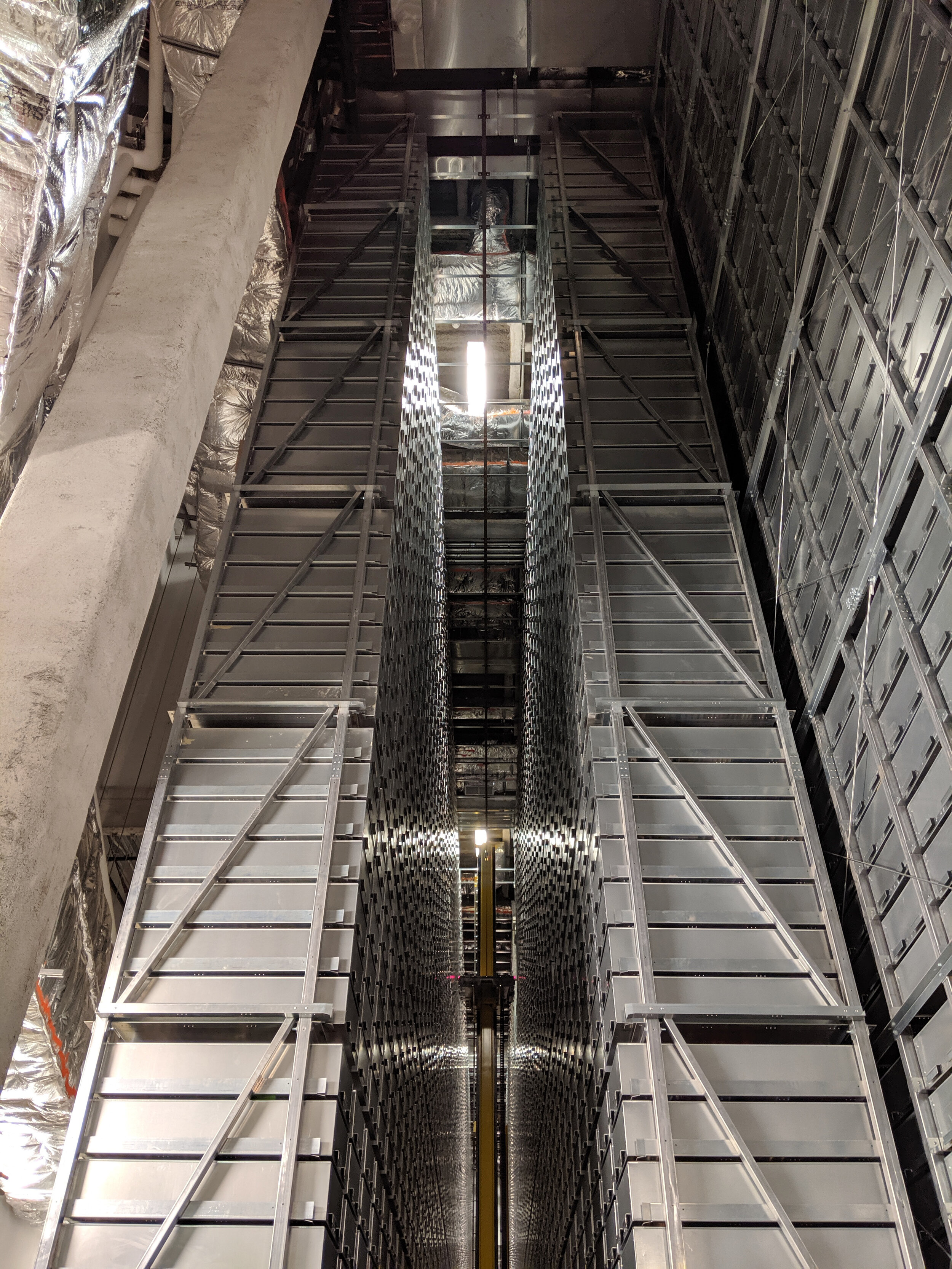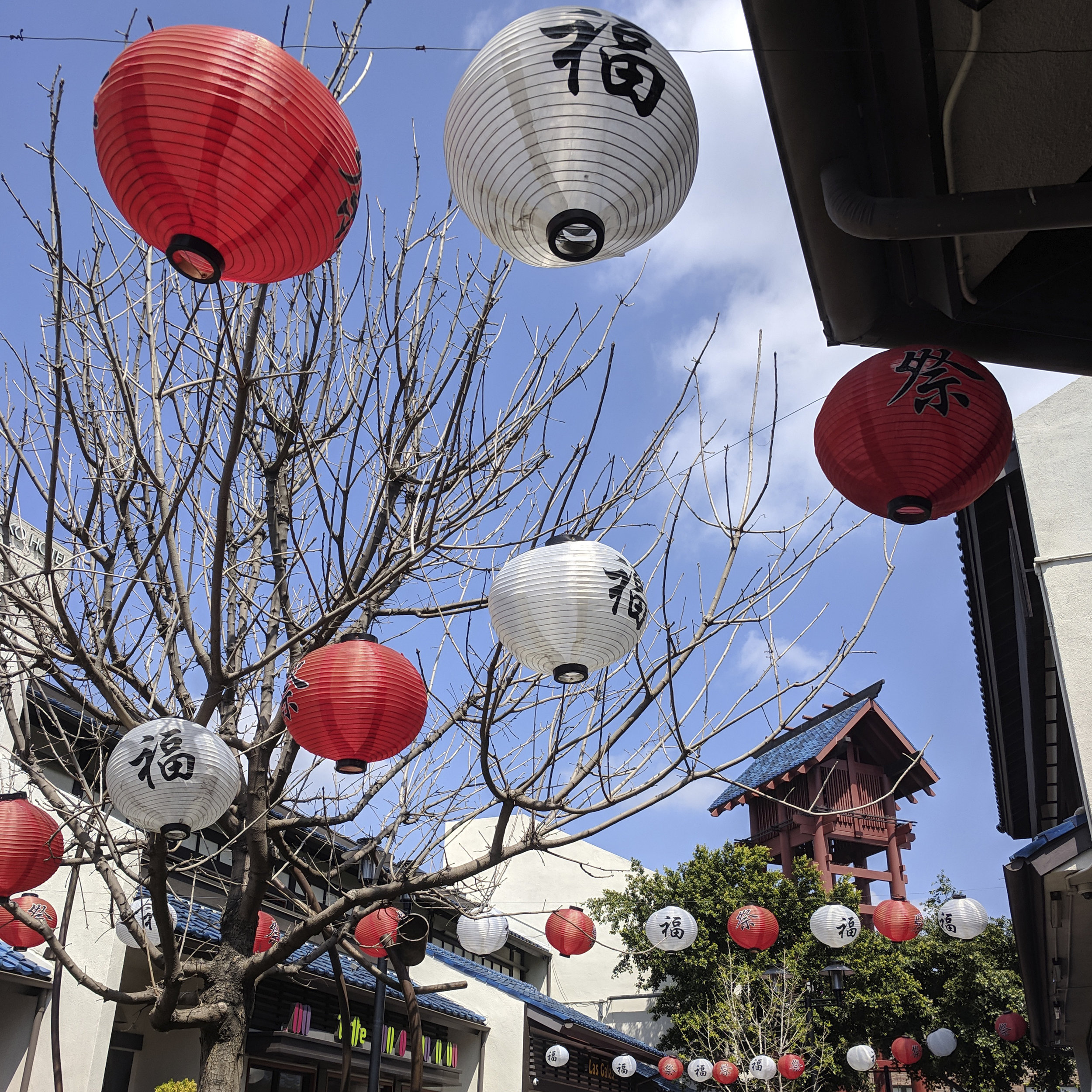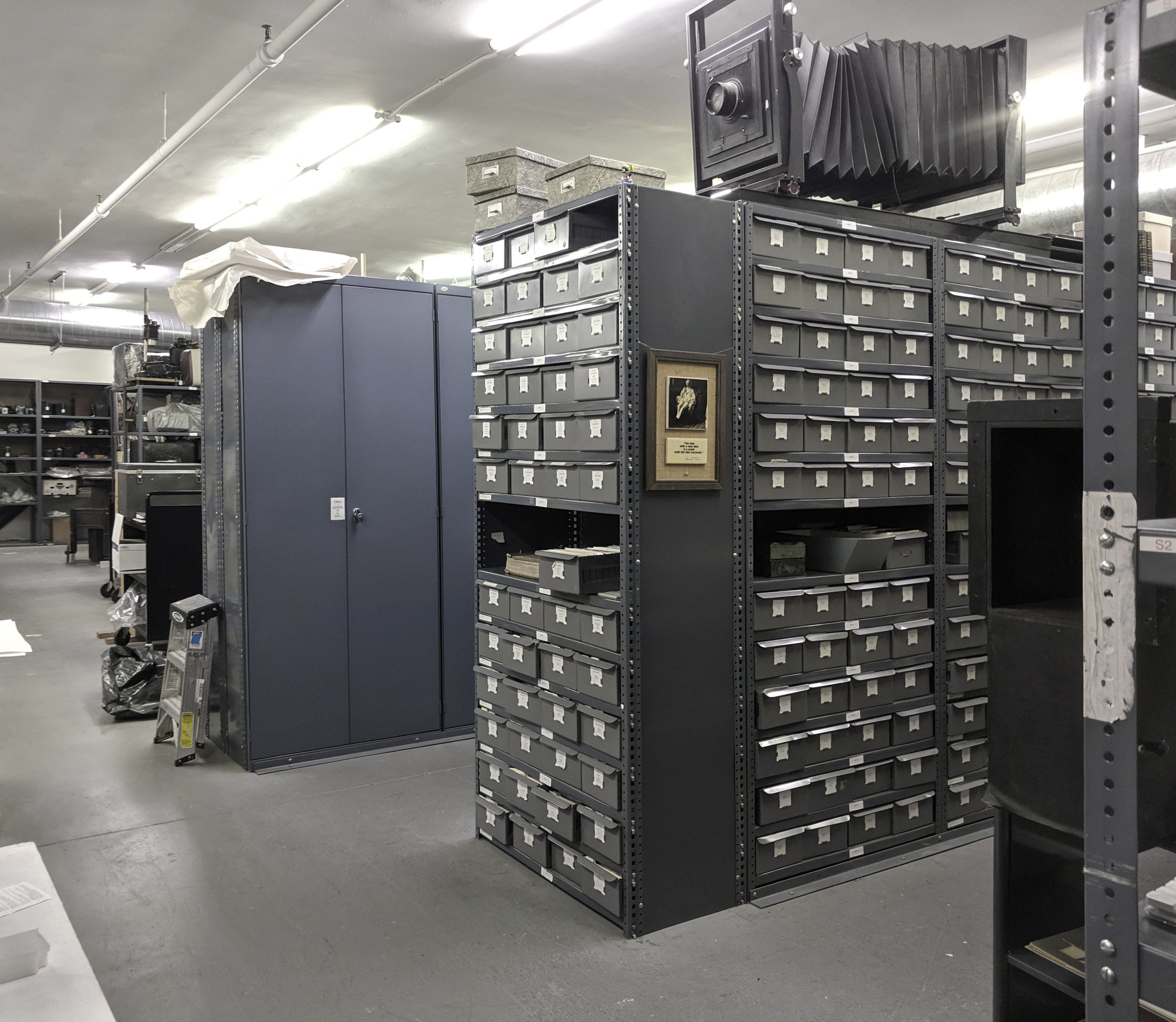The annual Society of American Archivists conference was once again held in a digital format this year. Given my feeling of burnout, I attended with the hopes that it would help reignite my interest in archival work. Fortunately, the conference did not disappoint!
It was wonderful to see so many sessions that seemed to be focused on two general themes: reparative description and community archives. These are both topics that I have been interested in and wanting to learn more about, and given the number of sessions that addressed issues around both, I feel as though I walked away with a variety of perspectives.
Samip Mallick presenting during the session ‘Community Archives Collaborative: Transforming Archival Work with Community-based Archives.’ The quote on his slide underscores the importance of archival records to communities, especially those that aren’t a part of dominant culture.
The sessions that I attended (both synchronously and asynchronously) that looked at the possibilities for inclusive metadata practices included: Instituting Sustainable Reparative Work from Where We Are; Language Matters: NARA and LAC Tackle Reparative Description; Temporal Ties: Addressing Harmful Pasts, Towards Imagining Just Futures; Foundations for Culturally Competent, Racially Conscious Metadata; and Making Product Less Problematic: Considerations of MPLP and Conscientious Description. The panelists in each session represented a range of different institutions - from government agencies to university libraries to small archives. It was helpful to find common threads throughout much of the discussion:
Understanding your positionality (race, class, gender, nationality, disability status, etc) and how personal identity terms are not neutral are critical aspects to being mindful about this work, and also acknowledging that even with the best intentions it is very possible to perpetuate harm, especially if you belong to dominant identities
Starting somewhere, even with small or basic steps like remedying collection-level description; progress over perfection
Knowing that as archivists we often won’t know everything and need to reach out to subject experts, who are almost always members of the communities represented in and/or created by our collections
Seeking community collaboration - not only around terms but also what priorities should be - can help archivists to be more strategic and create paths forward
Embracing the reality that this work is iterative and that our workflows and resourcing (staff, time, etc) should take this into account; programs not projects so that the work is sustained rather than one-off
Accepting that we may use technology to aid in speeding up some of this work - using a script to identify lists of problematic or harmful terms in finding aids, for example - but that redescription requires human intervention and judgment calls
Accepting that there is no one-size-fits-all solution to redescription and reparative metadata work
Approaching the work with an ethic of care and cultural humility
Leaving notes on what was changed or amended for future users and archivists, considering if/when it is appropriate to retain previous harmful or erasing description
Sam Winn presenting during the session ‘Foundations for Culturally Competent, Racially Conscious Metadata.’ The slide provides reflections on the politics of naming.
Betts Coup presenting during the session ‘Making Product Less Problematic: Considerations of MPLP and Conscientious Description.’ The slide suggests that there should be normalization of not knowing and that learning and change should be key components to archival work.
I’m still mulling over all these ideas, and how care is so critical to a seemingly straightforward practice like description. That human-centered focus was a central theme to the sessions on community archives, as well. These sessions included: Temporal Ties: Addressing Harmful Pasts; Considering the Power of Naming Practices in Community-Based Archives; and Community Archives Collaborative: Transforming Archival Work with Community-based Archives. Some of my takeaways from these conversations:
Many communities have grappled with symbolic annihilation from archives, which is when you and your community is not represented in mainstream collections; as a result these individuals and communities’ relationships with “traditional” repositories may be strained
Community-based archives can provide an antidote to the traditional archival model in enabling folks to own their stories and history - in all its variation - outside those traditional repositories; self-determination, cultural sovereignty, and agency are key
Some community-based archives may opt to adopt a post-custodial approach so that the owners/creators of the materials are able to retain the originals and the archive can then provide access to and unify materials digitally
Community-based archives serve to help people process generational trauma and heal, and also connect with previous generations and reclaim heritage; these archives can be a way of finding home and a way of continuing to keep the culture going
Community is complicated! Marginalized communities aren’t a monolith, and it’s always important to take power dynamics into account with interactions; what is our relationship to power and how do we use it?
Community-based and driven archives aren’t just about a repository collecting materials from a community but rather can and should be about disrupting existing power structures, including but not limited to training community archivists and providing them with free archival materials
Depending on the nature of the organization, community-based archives may benefit non-hierarchical organizational structure and consensus based decision making
Aside from simply amassing and providing access to materials, community-based archives can be uniquely positioned to activate their collections through collaborations
Joyce Gabiola and Gabrielle Garcia presenting during the session ‘ Temporal Ties: Addressing Harmful Pasts, Toward Imagining Just Futures.’ The slide reviews their framework for creating an inclusive environment at their organization.
Dominique Luster presenting during the session ‘Foundations for Culturally Competent, Racially Conscious Metadata.’ The slide asserts that archives are not neutral and that cultural competency is key in archival work.
I feel like so much of the work discussed during the sessions I attended critically looked at dismantling dehumanizing power structures in archives. The field has a long way to go in acknowledging and repairing the harm that has been done, often under the guise of neutrality and professionalism. It is heartening to see more folks working in the field centering human-centered archival work.








